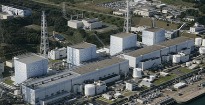Japanese Radioactivity Danger Still Unclear
 The New York Times reports:
The New York Times reports:
The different radioactive materials being reported at the nuclear accidents in Japan range from relatively benign to extremely worrisome.
The central problem in assessing the degree of danger is that the amounts of various radioactive releases into the environment are now unknown, as are the winds and other atmospheric factors that determine how radioactivity will disperse around the stricken plants.
Still, the properties of the materials and their typical interactions with the human body give some indication of the threat.
“The situation is pretty bad,” said Frank N. von Hippel, a nuclear physicist who advised the Clinton White House and now teaches international affairs at Princeton. “But it could get a lot worse.”
In Vienna on Saturday, the International Atomic Energy Agency said Japanese authorities had informed it that iodine pills would be distributed to residents around the Fukushima Daiichi and Daini plants in northeast Japan. Both have experienced multiple failures in the wake of the huge earthquake and tsunami that struck Friday.
In the types of reactors involved, water is used to cool the reactor core and produce steam to turn the turbines that make electricity. The water contains two of the least dangerous radioactive materials now in the news — radioactive nitrogen and tritium. Normal plant operations produce both of them in the cooling water, and they are even released routinely in small amounts into the environment, usually through tall chimneys.
Click here to read more.

